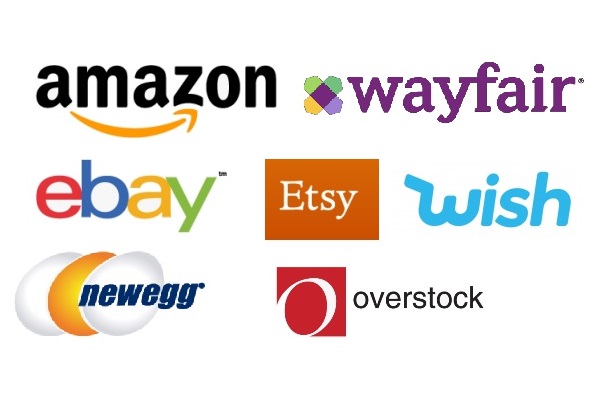
Many of our clients approach us with curious about launching their own e-commerce sites and marketing campaigns (branding, content strategy, SEO, SEM, etc.). They are intrigued by the possibility of, and the prospects, of lowering their dependency on Amazon and other mega retailers. We cannot say for certain as the time required to build a brand and up an e-commerce site can vary depending on several factors. Complexity of the site, the number of products, the level of customization needed, and the resources available, are just a few.
There are also competitive factors such as competition in the market for share of marketing channels and presently dominant players with large budgets to overcome. However, we can usually provide the following phases and timeline as a rough estimate keeping in mind that the relative simultaneity of the phases will be determined by the client’s budgeting or internal deadlines.
Phase 1: E-commerce Site Development (1-2 months):
This phase involves designing and developing your e-commerce website. You can hire a web developer/agency like Nomadia Inc. or self-manage e-commerce platforms like Shopify or WooCommerce. The time needed will depend on the complexity of the design, features required, and the speed of implementation.
Phase 2: Product Selection and Preparation (1-2 months):
This phase involves selecting the products you want to sell, sourcing them, and preparing them for listing on your website. The time required will depend on factors such as product availability, negotiation with suppliers, and the number of products you plan to offer.

Phase 3: Content Creation (1-2 months):
Creating high-quality content for your products, including product descriptions, images, and videos, is crucial for an e-commerce site. Depending on the number of products and the resources available, this phase can take several weeks.
Phase 4: Marketing Strategy and Setup (2-4 weeks):
During this phase, you’ll need to develop a marketing strategy to attract customers to your site. This includes setting up social media accounts, email marketing campaigns, content strategy, and other advertising channels. The time required will depend on your familiarity with marketing platforms and the complexity of your strategy.
Phase 5: E-commerce Site Launch and Initial Marketing (ongoing):
Once your website is ready and your marketing channels are set up, you can launch your e-commerce site. You can also start allocating your monthly marketing budget to drive traffic to your site. These will be things like search engine marketing, influencer collaborations, and paid social media advertising. The marketing efforts will require continuous monitoring and optimization as you gather data and adjust your strategies.
Other factors affecting e-commerce site launch timeline:
It’s important to note that these timelines are estimates and can vary based on your specific circumstances. The success of your e-commerce site will not depend on budget but also on the effectiveness of your marketing strategies, the competitiveness of your industry, and the overall market conditions.
- Team and Resources. The size and expertise of your team, as well as the availability of resources, can impact the timeline. If you have a dedicated team working full-time on the project, it may progress faster than if you have limited resources or team members working part-time.
- Customization and Complexity. If your e-commerce site requires extensive customization or unique features, it may take longer to develop and test. Complex functionality, such as integration with third-party services or advanced payment systems, can also extend the timeline.
- Content Generation. Creating compelling and high-quality content for your e-commerce site, including product descriptions, images, videos, and blog posts, can be time-consuming. The availability of resources, such as professional photographers or copywriters, can affect the timeline.
- Platform Selection: The choice of e-commerce platform can impact the development timeline. Some platforms offer pre-designed templates and easier customization options, which can speed up the process. However, if you opt for a custom-built solution, it may take longer to develop.
- Legal and Regulatory Requirements. Depending on your location and the products you sell, there may be legal and regulatory requirements to consider. This may include obtaining necessary licenses and complying with consumer protection laws. It may also mean ensuring your website meets privacy and data protection regulations. Adhering to these requirements can add time to the development process.
- Testing and Quality Assurance. Thoroughly testing your e-commerce site before launch is crucial to ensure a smooth user experience and functionality. This testing phase can uncover issues that require troubleshooting and refinement, potentially extending the timeline.
- Market Research and Competition Analysis. Conducting market research and analyzing your competition is an essential step in developing a successful e-commerce site. This research helps you identify your target audience, understand their preferences, and develop effective marketing strategies. The time required for market research and analysis can vary depending on the complexity of your industry and the availability of data.

Conclusion:
Building an e-commerce site and launching marketing campaigns can vary in time and success. Factors such as site complexity, product range, customization, resources, and competition play a role. The suggested phases provide estimates, but their order depends on client budgeting and deadlines. Success relies on effective marketing strategies, industry competitiveness, and market conditions. Consider factors like team, customization, content, platform, legal requirements, testing, and market research. At Nomadia Inc we are eager to work with clients on the difficult but rewarding task of launching their own e-commerce and brand building campaigns. We firmly believe the investment is small relative to being able to control your own destiny in an increasingly precarious mega-retail site environment. Drop us an email today, let’s discuss what’s possible for you.









